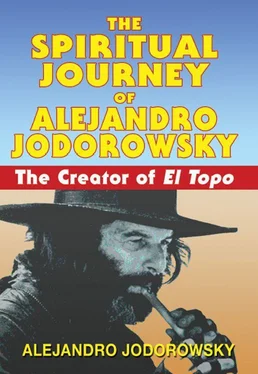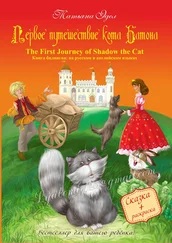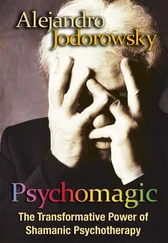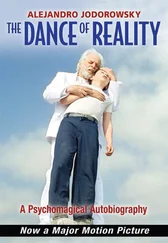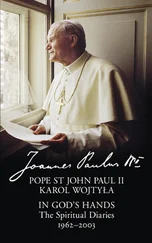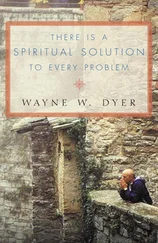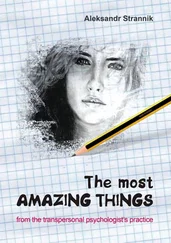At Puebla, we took a battered old bus that was even more full than the train and headed toward the mountains. The trip lasted several hours. It was impossible to sleep with all the noise of people chattering, chickens clucking, dogs barking, children crying, and the engine roaring and the flies, the dust, the stifling heat. I made a titanic effort to calm my nerves and said to Ejo:
“Why don’t we take advantage of this time to study another koan?”
“Time is not a thing. Ten thousand rivers flow to the sea, but the sea is never full. Ten thousand koans fill your mind, but you are never satisfied. Adapt your mind to the circumstances in which you find yourself. Look around you, look at yourself, and take advantage of that.”
Yet seeing how tenacious my boredom was, he shrugged his shoulders, as if dealing with a hopeless case. Without enthusiasm, he recited: “When the Buddha was being born, he pointed with one hand to the sky and with the other to the earth. He took six steps in a circle and looked in the four directions, saying: ‘I am the only honored one in the sky and under the sky.’ Master Ummon commented: ‘If I had been there, I would have beaten him to death with a stick and thrown his body to the dogs. It is important for the world to be at peace.’ Commenting upon that, Master Ryosaku said: ‘Ummon believes that we must offer our body and soul to the world. This is called repaying the favor of the Buddha.’ And you — what do you say?”
I reflected on my response, but before I could say a word, the bus was shaken by a violent jolt, probably because of a pothole. A package fell on a child, making his forehead bleed. The boy began to scream, his face covered with blood. Ejo got up calmly, took a tube of powdered green clay from his sack, and rubbed it on the boy’s wound. A scab formed immediately and the blood stopped flowing. The child stopped crying. Through the open windows, the silence of the Cordillera entered. Ejo came back and took his seat next to me as if nothing had happened. I felt the clouds in my mind disperse, allowing a ray of light to enter. With deep respect, I murmured: “It is important for the world to be at peace.”
Ejo smiled, closed his eyes, and began to snore. I was ashamed. I saw myself as a seeker of gurus, gods, worlds beyond, and other sorts of metaphysical aspirin, all for the lack of a kind father. Through the words attributed to Ummon, the koan gave very clear advice to uproot all those legends, fairy tales, infantile venerations, and grandiose hopes that are inspired by fear of death. I was not a safe little bird waiting calmly in its nest for my mother to drop a tasty worm into my mouth. To follow after the Buddha slavishly was no better than rolling in dog shit. As long as I seek the light outside myself, the world will never be at peace. I observed my body invaded by nervousness, I saw my insatiable appetite for knowledge, my desire to plunder the secrets of all the masters instead of realizing myself, instead of repairing the self-esteem that my father, like a competitive child, had destroyed with his sarcasm.
Ryosaku affirmed that everything we have attained must be given in return—“Nothing for myself that is not also for others.” To find yourself is to give yourself to the world, body and soul. To be an integral part of the world, let things happen naturally, without useless effort, surrendering confidently to the present. In accepting Ejo Takata as my teacher, I had moved from me to you . Yet because I still saw others as them , I had rejected the we . In wearing the label “artist,” I had tried to make Ejo into an ideal refuge. There, like a blind and deaf mole, I had distanced and alienated myself from the world. Nevertheless, however alienated I was from this world, I was still more than ready to steal food from it in the form of applause, love affairs, rewards, diplomas, and fame. I was neither more nor less than a thieving parasite. I was always taking, and in return, I offered only autographs, literary portraits of my navel, photographs through an artist’s mask, and distractions to capture the attention of the whales of social admiration. Meanwhile, the world was proliferating more and more war, misery, sickness, child abuse, murderous industries, inhuman bankers, toxic disinformation, political corruption. . And I, in the safe island of my mind, created an art that amounted to buffoonery, a brilliant veneer to hide the darkness of other thieves like myself — thieves who pillaged the earth, robbing others of their health, transforming their time into a hard personal shell, dividing others’ space into dog kennels in which these citizens, befuddled by the walls, accepted the obligatory blindness.
I saw that nothing was really mine; everything was on loan to me, and anything that I do not give back amounts to thievery. Now I am carrying a sack of grain. Thus is my mind. If I am really an artist, I must sow it. And if I am to be a master, I must teach others to sow, to make it grow, to harvest it. If I remove my selfishness from the world, the world will find peace. Things will then cease to be as I thought they were and will become the truth that they already are.
We hitchhiked from Oaxaca, crossing endless plantations of corn and finally arrived at Santa Maria Mixi. It was a small hamlet of houses with roofs made of grass and palm leaves and with cobbled walls covered with a light coat of plaster and with only one door and several windows.
A group of Indians came to welcome us. There were men, women, and children. Probably all mixed-race, these people had abandoned their ancestral tribal customs to become “peasants” grouped into families. Our visit had caused a sensation — it had been a long time since anyone had bothered to visit these sad lands. With a friendly smile, Ejo made a respectful bow, and I did likewise. The Indians removed their straw hats in return. Ejo looked around for a clear space between the rows of corn and sat on the ground with his legs crossed. He rubbed the earth with care, ridding a large space of its small stones, and then let the soybeans pour out from his sack into a heap. The little yellow spheres seemed like magical jewels lying upon the reddish ground. This did not fail to arouse the curiosity of all the people. In his rudimentary Spanish, the master began to speak. What he said was so interesting to the peasants that several of them ran into the fields to fetch the others who were working there. Ultimately, a circle of about fifty people had formed around us. Because Ejo’s pronunciation mixed up rs and ls, I improvised a kind of translation.
“This is a powerful variety of soy that comes from Japan. Its roots go down three feet. It resists freezing and drought. It is very rich in protein and in oil. It can be harvested several times a year and grown in any season. It does not need rich soil and will grow even in infertile soil.”
For about three hours, Ejo explained how to plant soybeans, how to grow them, protect them from parasites, harvest them, and use them. He gave a description of almost two hundred products that could be derived from them: oil, milk, cheese, flour, yogurt, animal fodder, and lecithin, and they may be simply grilled like peanuts.
Then, drawing on the ground with a stick, he showed how to orient houses in relation to the sun, opening the windows and moving the stoves outside, because their presence inside was the cause of pulmonary diseases. He showed them how to build the stoves outside. He also showed them how to weave sandals using only plant materials. He taught them techniques for making butane gas with their excrement.
Then he told them: “These lands belong to you, not to the corn. You grow corn and sell it for a low price to industries that are growing rich behind your back. If these buyers ever stop coming here, you will die of hunger. This is the danger of letting an economy grow without limits. Become independent of these industries. Instead of planting to sell, plant first to feed yourselves and meet your own needs. Soybeans are much more useful than corn.”
Читать дальше
